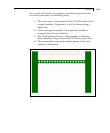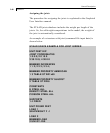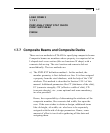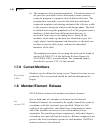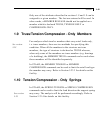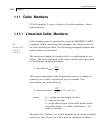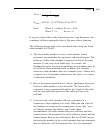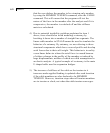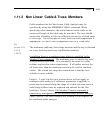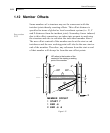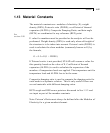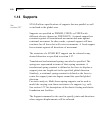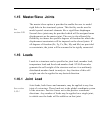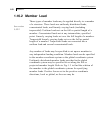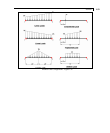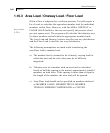
Section 1
1-53
1.11.2 Non Linear Cable & Truss Members
Cable members for the Non Linear Cable Analysis may be
specified by using the MEMBER CABLE command. While
specifying cable members, the initial tension in the cable or the
unstressed length of the cable may be provided. The user should
ensure that all cables will be in sufficient tension for all load cases
to converge. Use selfweight in every load case and temperature if
appropriate; i.e. don’t enter component cases (e.g. wind only).
See
s
ection 5.23,
5.37 &
1.18.2.5
The nonlinear cable may have large motions and the sag is checked
on every load step and every equilibrium iteration.
In addition there is a nonlinear truss which is specified in the
Member Truss command. The nonlinear truss is simply any truss
with pretension specified. It is essentially the same as a cable
without sag but also takes compression. If all cables are taut for
all load cases, then the nonlinear truss may be used to simulate
cables. The reason for using this substitution is that the truss
solution is more reliable.
Points 1, 2, and 4 in the prior section above will not apply to
nonlinear cable analysis if sufficient pretension is applied, so
joints may be entered along the shape of a cable (in some cases a
stabilizing stiffness may be required and entered for the first
loadstep). Point 3 above:
The Member Tension command is
unnecessary and ignored for the nonlinear cable & truss analysis.
Point 5 above: The cable tensions are iterated to convergence in
the nonlinear cable analysis.



